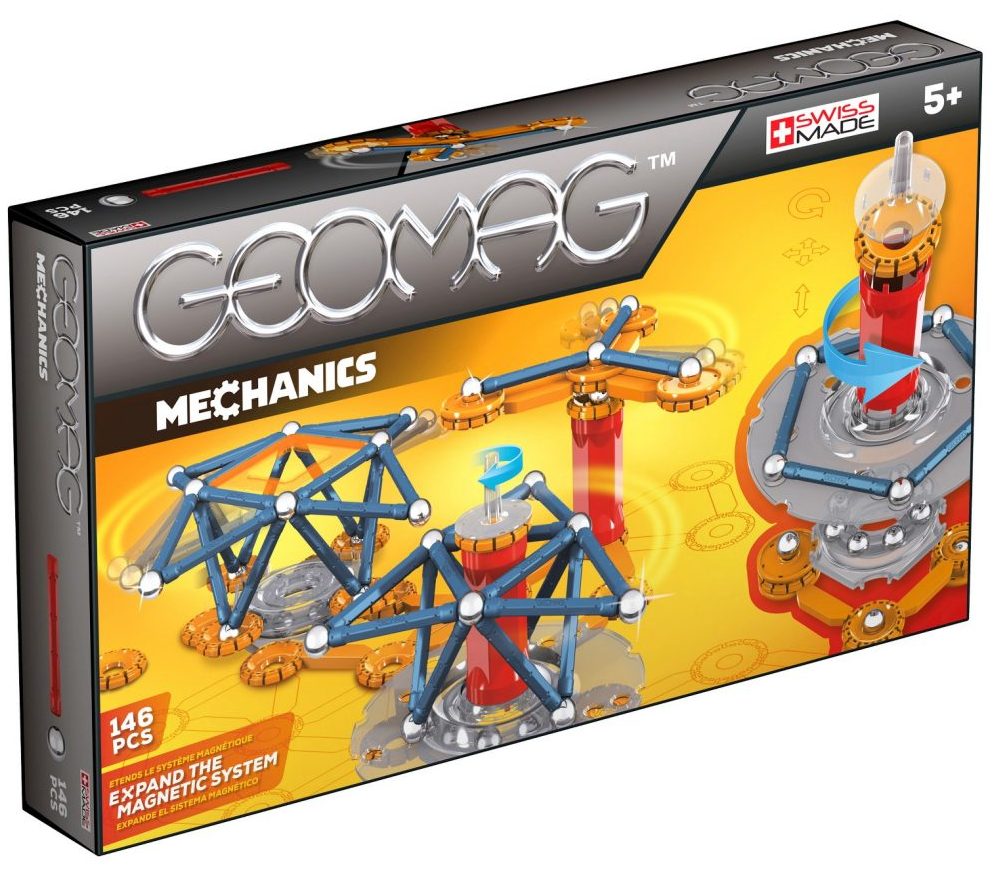
I have two nieces and two nephews, and since they were really little I’ve done my very best to buy them gifts that are fun, yet also educational or creative in nature. However, as they’ve gotten a bit older and pickier about what they do and don’t like, that task has become increasingly difficult. That’s why it was exceptionally convenient that I was recently given an opportunity to review a number of Geomag construction sets. I can now confidently say that two of them will find Geomag sets under the Christmas tree this year from their aunty.
What is Geomag?
Invented and patented in 1998, Geomag is a Swiss-made magnetic construction toy range that introduces children to the science of magnetic force. Kits come in a variety of sizes and skill levels, making them suitable for children as young as 3, and based on my experience, adults as old as 47.
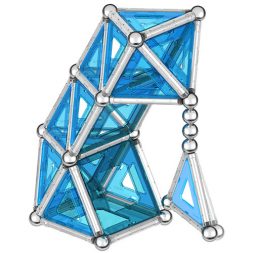
Each kit contains a number of magnetic rods and small non-magnetic steel spheres that join together to form different shapes and structures. Kids can either copy the model examples illustrated in each kit’s instruction manual, or get creative and design their own unique configurations.
Geomag construction sets are all about helping kids understand magnetism and how they can use its force to create different structures. Each magnetic rod has a north and south pole. If kids try and combine two opposite poles together they’ll see that the rods will attract and “connect.” If they try and connect two like poles together, they’ll see that the rods will actively repel each other.
There are a number of different sets to choose from, which range in size from 22 pieces all the way up to 222 pieces. Sets include:
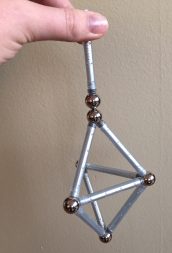 ProL: Geomag PRO-L is the first evolution of the classic Geomag construction set, and features blue transparent panels, magnetic rods, and steel balls, so kids can learn about the full potential of magnetism.
ProL: Geomag PRO-L is the first evolution of the classic Geomag construction set, and features blue transparent panels, magnetic rods, and steel balls, so kids can learn about the full potential of magnetism.- Panels: Geomag Panels sets allow your little engineer-in-the-making to build architecturally sound structures like bridges using bright and transparent triangle, square, and pentagonal panels in addition to the magnetic rods and steel balls.
- Glow: Geomag Glow sets also come with transparent panels so kids can construct more sound and solid structures. However, Glow’s phosphorescent pieces will make their creations glow in the dark for that added wow factor.
- Mechanics: Geomag Mechanics is an extention of the classic toy, with its bars and spheres, but with new mechanical elements that allow kids to move their structures with their hands or a “mechanical knob” to start chain reactions caused by magnetic attraction or repulsion.
Reviewing a PRO-L kit
I was sent 12 different Geomag sets to review, but chose to focus on two: the PRO-L 75 piece set, and the Mechanics 146 piece set.
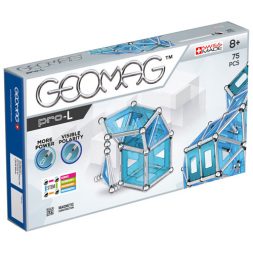 I began with the PRO-L set and was immediately amazed at how much fun it was to play with! In fact, time went by very quickly and I soon realized I lost more than two hours of my afternoon connecting the magnetic rods to the steel balls and using the transparent panels to create different structures. I did find the instructions to be somewhat lacking, but putting the different models together was pretty easy. Once I put the example models together, I created some “unique” concoctions of my own design.
I began with the PRO-L set and was immediately amazed at how much fun it was to play with! In fact, time went by very quickly and I soon realized I lost more than two hours of my afternoon connecting the magnetic rods to the steel balls and using the transparent panels to create different structures. I did find the instructions to be somewhat lacking, but putting the different models together was pretty easy. Once I put the example models together, I created some “unique” concoctions of my own design.
As I was playing with the PRO-L set, I felt like I was taken back in time to Grade 3 science and got a little too much pleasure out of repelling like poles.
Reviewing a Mechanics kit
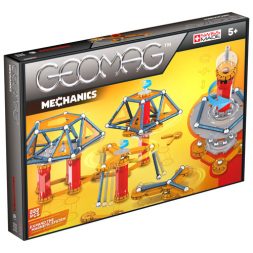 Then it was time to give the 222-piece Geomag Mechanics set a whirl. I laid out all the pieces and unfolded the instructions and went to work. Well, to say that the instructions were lacking is a severe understatement. I honestly felt like they had left out more than half of the steps, or that I had misplaced a second page or something. I did persevere however, and after 30 minutes I had a structure that closely resembled the model in the picture. The only problem? It was supposed to move due to magnetic attraction and repulsion. It did not.
Then it was time to give the 222-piece Geomag Mechanics set a whirl. I laid out all the pieces and unfolded the instructions and went to work. Well, to say that the instructions were lacking is a severe understatement. I honestly felt like they had left out more than half of the steps, or that I had misplaced a second page or something. I did persevere however, and after 30 minutes I had a structure that closely resembled the model in the picture. The only problem? It was supposed to move due to magnetic attraction and repulsion. It did not.
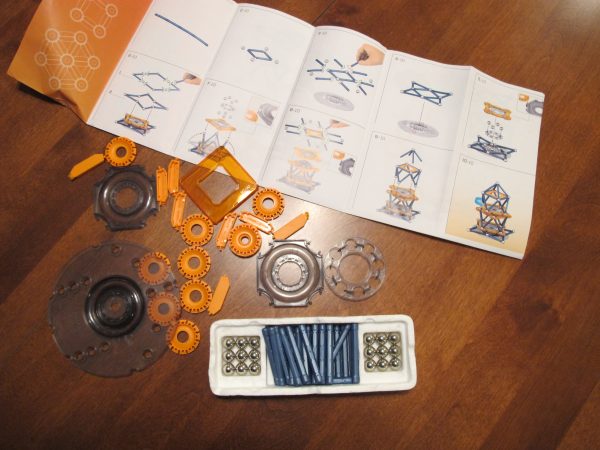
I set out to rebuild, and after another 40 minutes was faced with the same issue. I then enlisted the help of an engineer friend, and after a glass of wine and another 30 minutes, he had built the structure, but only the top part moved, when both the top and bottom were meant to. Needless to say, a little practice is required to identify different poles so the Geomag Mechanics structures move as they are intended.
Moving on, I then gave the Geomag Mechanics 146 piece set a whirl. This set came together much easier than the model I was trying to construct from the 222-piece set, and I was actually able to make it work. Once you get the hang out of determining the polarity of the different pieces and how they connect, it does start to get a little easier.
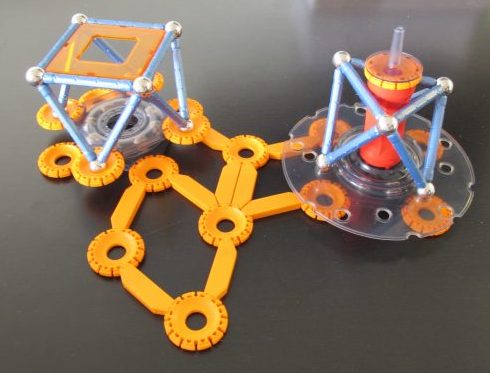 One thing to note is that putting different structures together can sometimes be finicky. On more than one occasion I had different pieces attract each other when they weren’t supposed to, so the whole structure came apart and I had to start over, but I suppose that’s part of the fun!
One thing to note is that putting different structures together can sometimes be finicky. On more than one occasion I had different pieces attract each other when they weren’t supposed to, so the whole structure came apart and I had to start over, but I suppose that’s part of the fun!
The verdict
To be perfectly honest, working with the Geomag Mechanics set made my friend and I seriously question our educations! I mean, these sets are intended for ages 3 and up! My rationalization is that kids don’t over analyze everything the way we adults do–that’s my story and I’m sticking to it.
But I digress. The reality is that the Geomag construction sets are so much fun, and because they help children of all ages develop their hand/eye coordination, motor and problem solving skills, and creativity through the science of magnetic construction, are a great gift idea any time of year. The other cool thing is that the sets are meant to work together, so the more sets you have, and hence the more pieces, the more amazing structures you can build!



